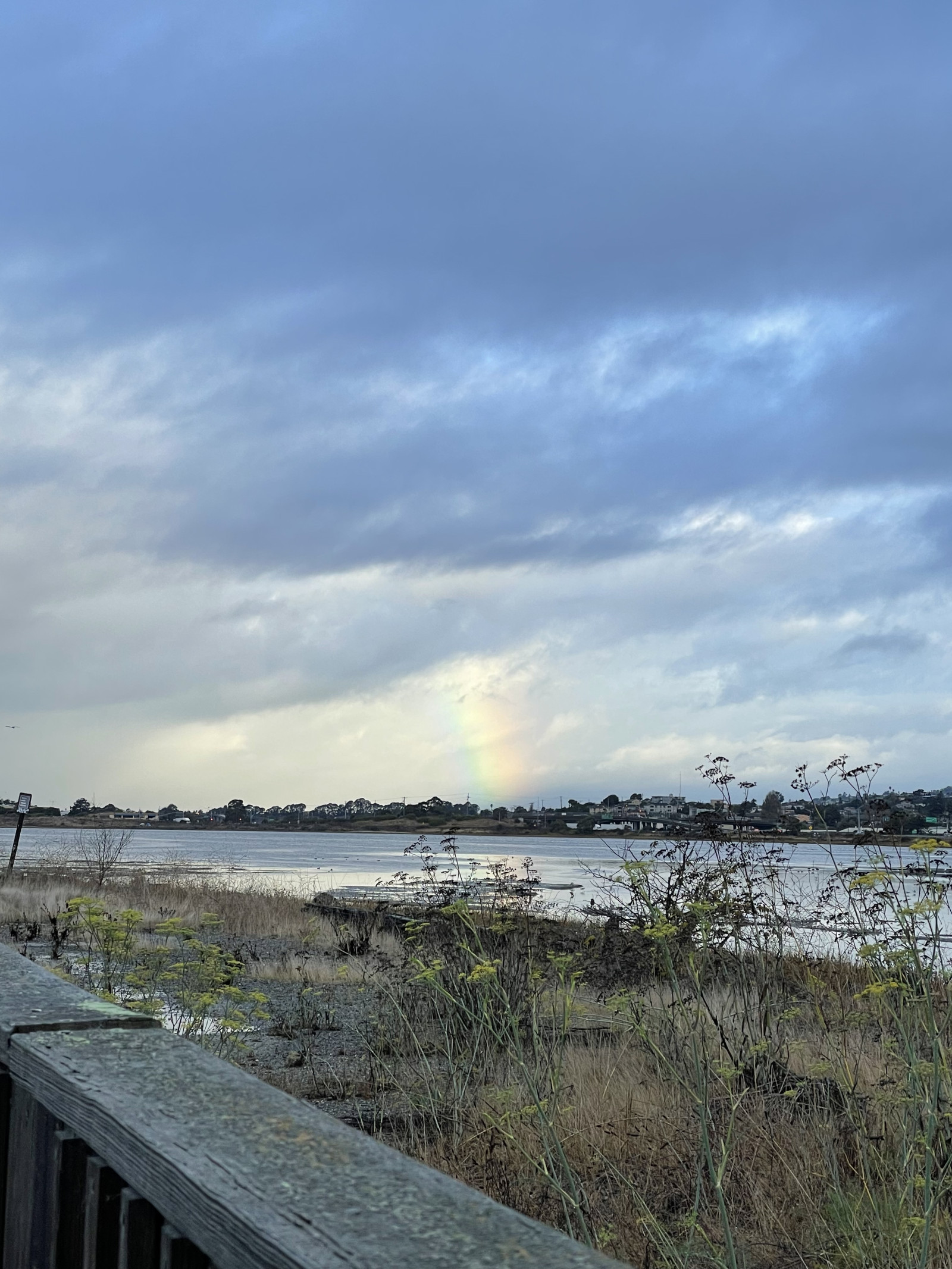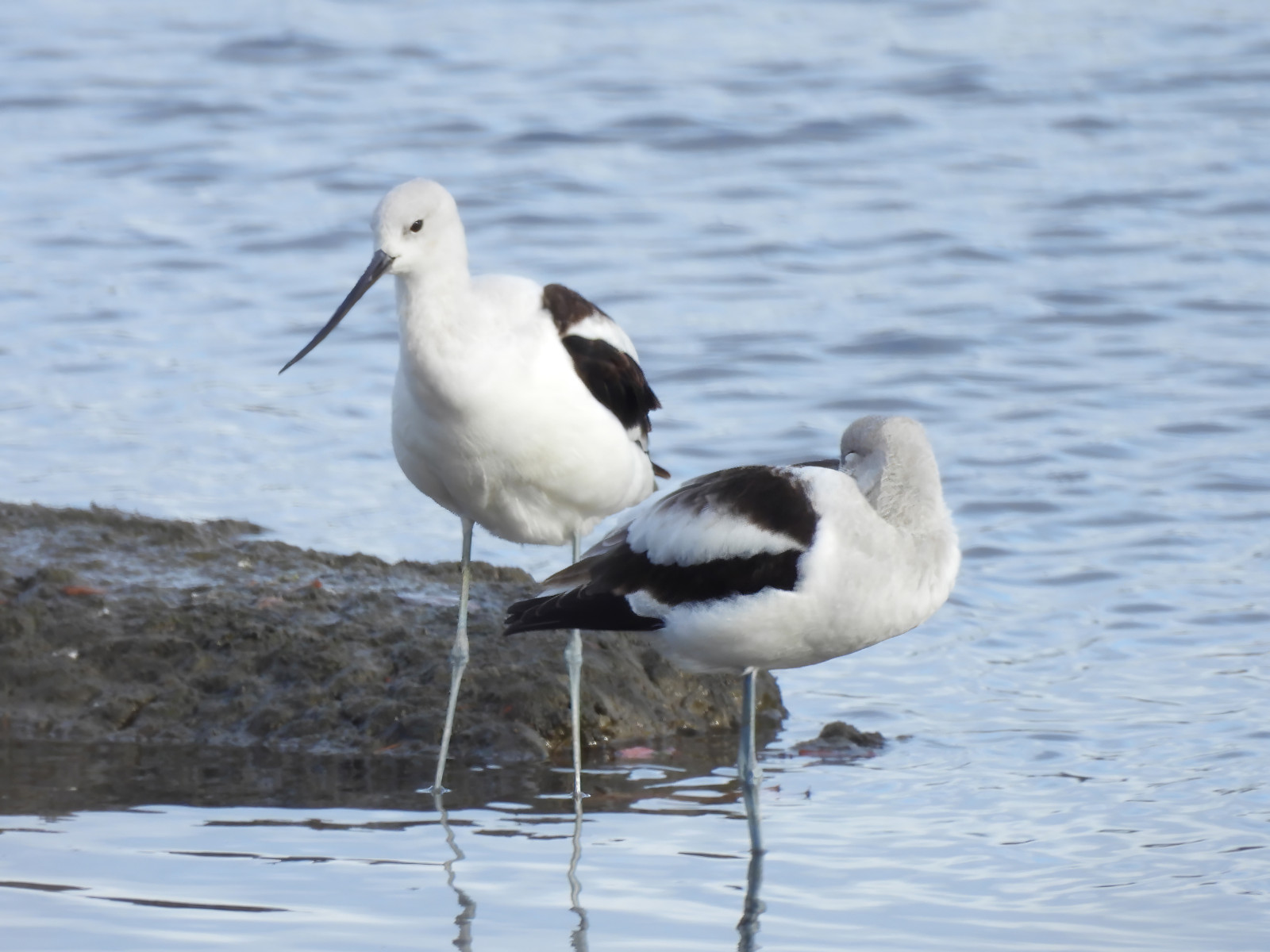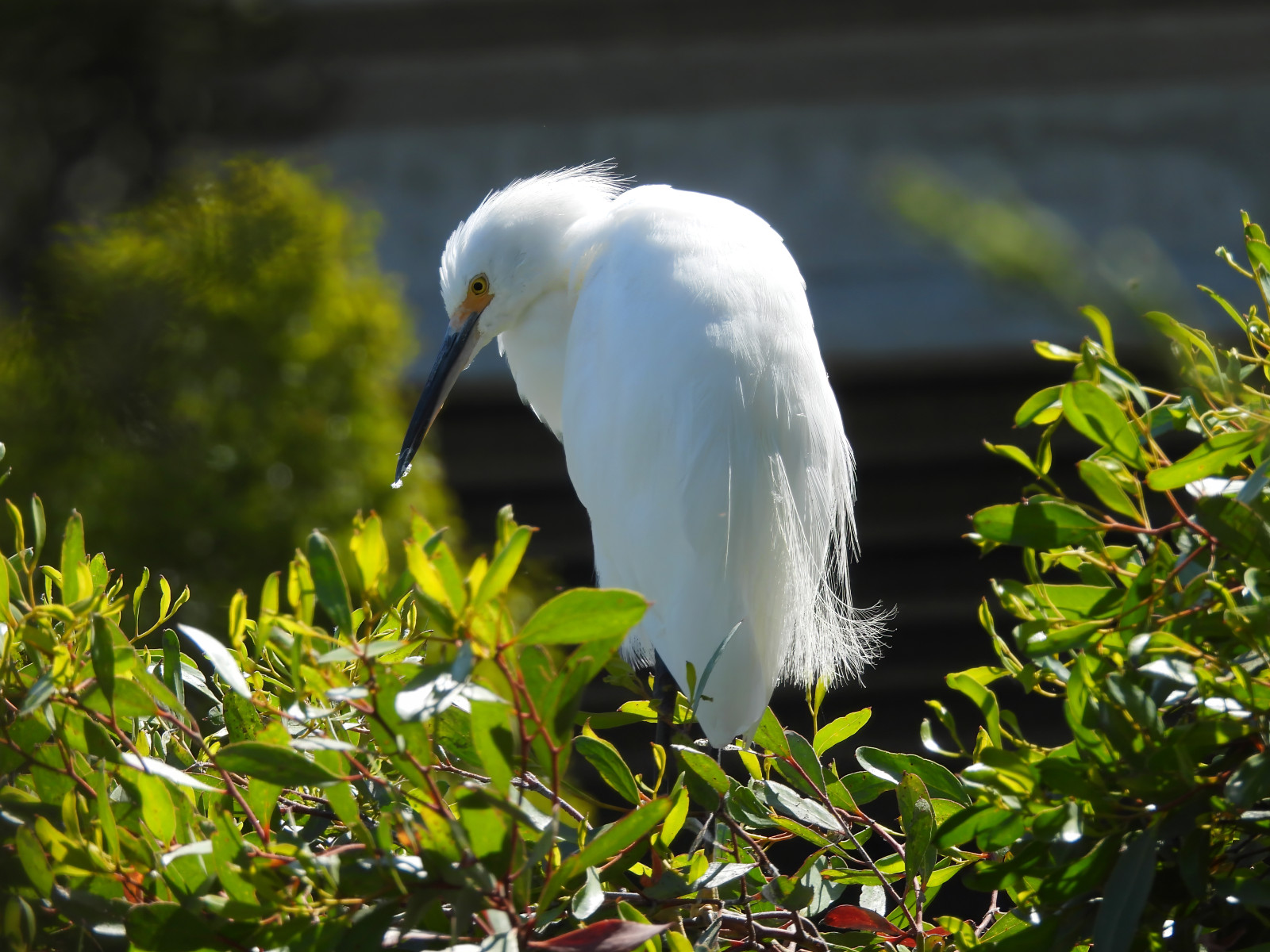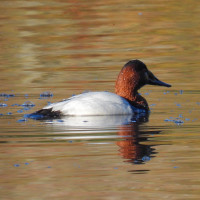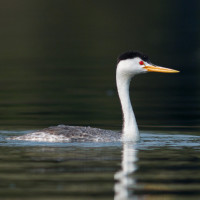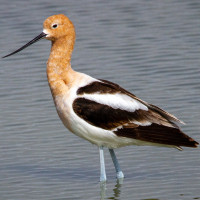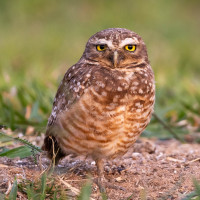Beschreibung
The Albany mudflats is one of the largest tidal wetlands at the North End of the East Bay, in the San Francisco Bay Area. At the right tide and season, this is an excellent place to view migrating / wintering shorebirds, ducks, gulls and other birds. The viewing area is along a walking path, and includes 2 raised platforms. A trail around the Albany Plateau (encompassing Winter habitat for Burrowing Owl) also provides viewing of the mudflats from the West side. The best time to visit is when the tide is at around 4 to 4.5 feet on a rising tide. At that time, the rising tide pushes the shorebirds closer and closer to the viewing platform and the creek outlet at the Southeast corner of the mudflats.
During migrations and in the Winter, species that are commonly seen here include large numbers of shorebirds like Western Sandpiper, Least Sandpiper, Dunlin, Marbled Godwit, American Avocet, Willet, Grey Plover and Semipalmated Plover. Black-necked Stilt, Whimbrel, Long-billed Curlew, and heron species such as Great Blue Heron, Snowy Egret and Great Egret are also commonly seen. Duck and geese species include: Greater Scaup Lesser Scaup, Green-winged Teal, Ruddy Duck, Northern Shoveler, Canvasback, Bufflehead, American Wigeon, Eurasian Wigeon, Greater White-fronted Goose and Canada Goose. A variety of land birds can also be seen, including Golden-crowned Sparrow, White-crowned Sparrow, Savannah Sparrow, Lincoln's Sparrow Anna's Hummingbird California Towhee, Bushtit, Northern Rough-winged Swallow , Barn Swallow, and others.
Peregrine Falcon and Merlin are both common here in winter, and if you walk East of the mudflats, one or both of the Peregrine Falcons can often be seen perched inside the structure of the two radio towers visible to the northwest at GPS point: (37.8958812, -122.3245031).
The Albany plateau next to the wetlands includes a Burrowing Owl preserve, which is also a great spot for Buff-bellied Pipit, Western Meadowlark, and Red-winged Blackbird.
The Albany Bulb (at the end of the spit of land West of the mudflats, is also a great birding spot that includes a large shorebird roost at high tide at GPS point (37.8890548, -122.3275055), and there is also a decaying pier at GPS point (37.8855834, -122.3170972) that often serves as a minor shorebird roost (though the shorebird numbers there have decreased as the pier ruins get smaller). The ruined pier is a dependable spot for Pelagic Cormorant.
Details
Zugang
The Albany mudflats are located in the northern East Bay. Access is by car. There is parking along the road, and there are several parking areas near the West end of the road. Click on a P in the map for directions or coordinates. Parking is limited to 2 hours. Bathrooms are located at the West end of the road, near the Albany Beach.
